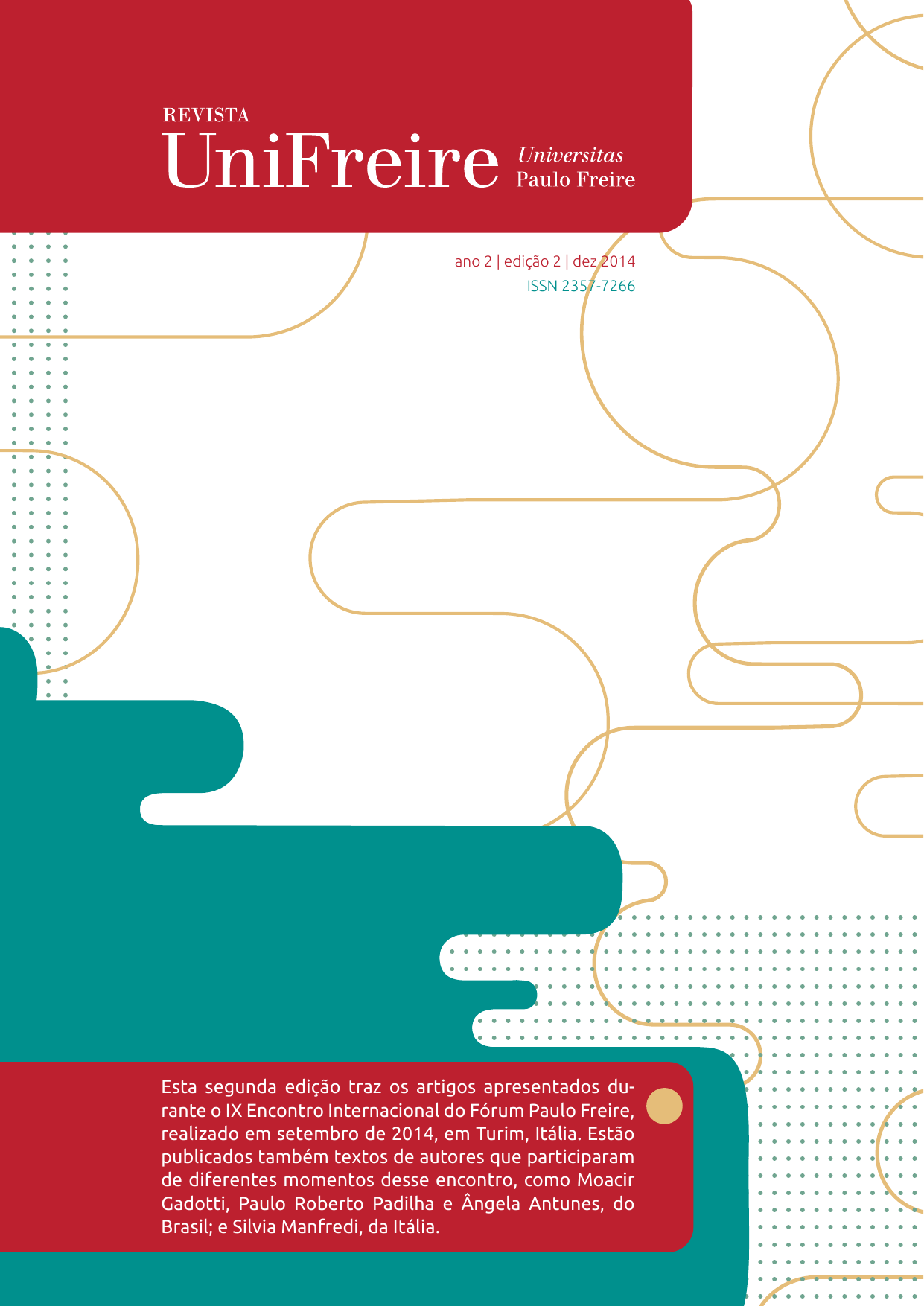PAULO FREIRE E A CULTURA CAIÇARA
a amorosidade no “cerco de saberes”
Keywords:
Caiçara education, Emancipatory education, Caiçara knowledge.Abstract
The project “Cerco de Saberes: building the School of Martim de Sá Beach” was designed to promote diversified activities that can contribute to the process of literacy of caiçaras children and adolescents. The traditional community chosen is the one that inhabits, for generations, the territory corresponding to the pro‑tected area Reserva Ecológica da Juatinga (REJ), situated in Paraty (RJ), Brazil. This article presents a report about the experience of a university extension project that seeks to enhance the caiçaras knowledge and promote the empowerment of that traditional community facing different exclusionary movements that make them vulnerable and excluded from the current Brazilian model of social development. It has the concern to attend the demand presented by the caiçara community to develop a differentiated curriculum that includes culture circles with the development of literacy activities. The activities of the School of Martim de Sá Beach involve dialogic interaction between educators and caiçaras learners, including the world reading, writing production and field research activities. The literacy process relies on the enhancement of the caiçara identity, starting with the reflection about the children and their families names, and also on the recog‑nition of the ecological diversity of the place that they inhabit for generations. The literacy was developed based on the strengthening of the caiçara world reading, stimulating a writing based on the knowledge about the sea and the nature pre‑sented by the children. Among other things, we highlight the amorousness among caiçaras, educators and students as an essential factor to mobilize the team and all collaborators to face the adversities that have been impeding the installation of an official school in the community.References
FREIRE, Paulo. Pedagogia da autonomia: saberes necessários à prática educativa. Rio de Janeiro: Paz e Terra, 1996.
MONGE. Ricardo “Papu” Martins. Pesca com rede de cerco flutuante na Reserva Ecológica da Juatinga (REJ), município de Paraty/RJ. 92f. Monografia (Bacharelado em Ciências Biológicas) – Instituto de Biologia, Universidade Federal Fluminense, Niterói, 2008.
______. “Nascido e criado”: a ocupação tradicional da Família dos Remédios, uma comunidade “caiçara” – Península da Juatinga, município de Paraty/RJ. 176f. Disser‑tação (Mestrado em Ciência Ambiental) – Instituto de Geociências, Universidade Federal Fluminense, Niterói, 2012.
______. Pensando a escola na comunidade caiçara de Martim de Sá, Península da Juatinga, município de Paraty/RJ. 2013. 63f. Monografia (Licenciatura em Ciências Biológicas), Universidade Federal Fluminense, Niterói, 2013.
PISTRAK, Moisey Mikhaylovich. Fundamentos da Escola do Trabalho. São Paulo: Brasiliense, 1981.
SILVA, Luiz Geraldo. “Da terra ao mar: por uma etnografia histórica do mundo caiçara”. In: DIEGUES, Antônio Carlos (org.). Enciclopédia caiçara: o olhar do pes‑quisador. (Vol. 1). São Paulo: Hucitec/NUPAUB/CEC/USP, 2004, p. 49 ‑69.
VIANNA, Lucila Pinsard. De invisíveis a protagonistas: populações tradicionais e unidades de conservação. São Paulo: Annablume/Fapesp, 2008.


